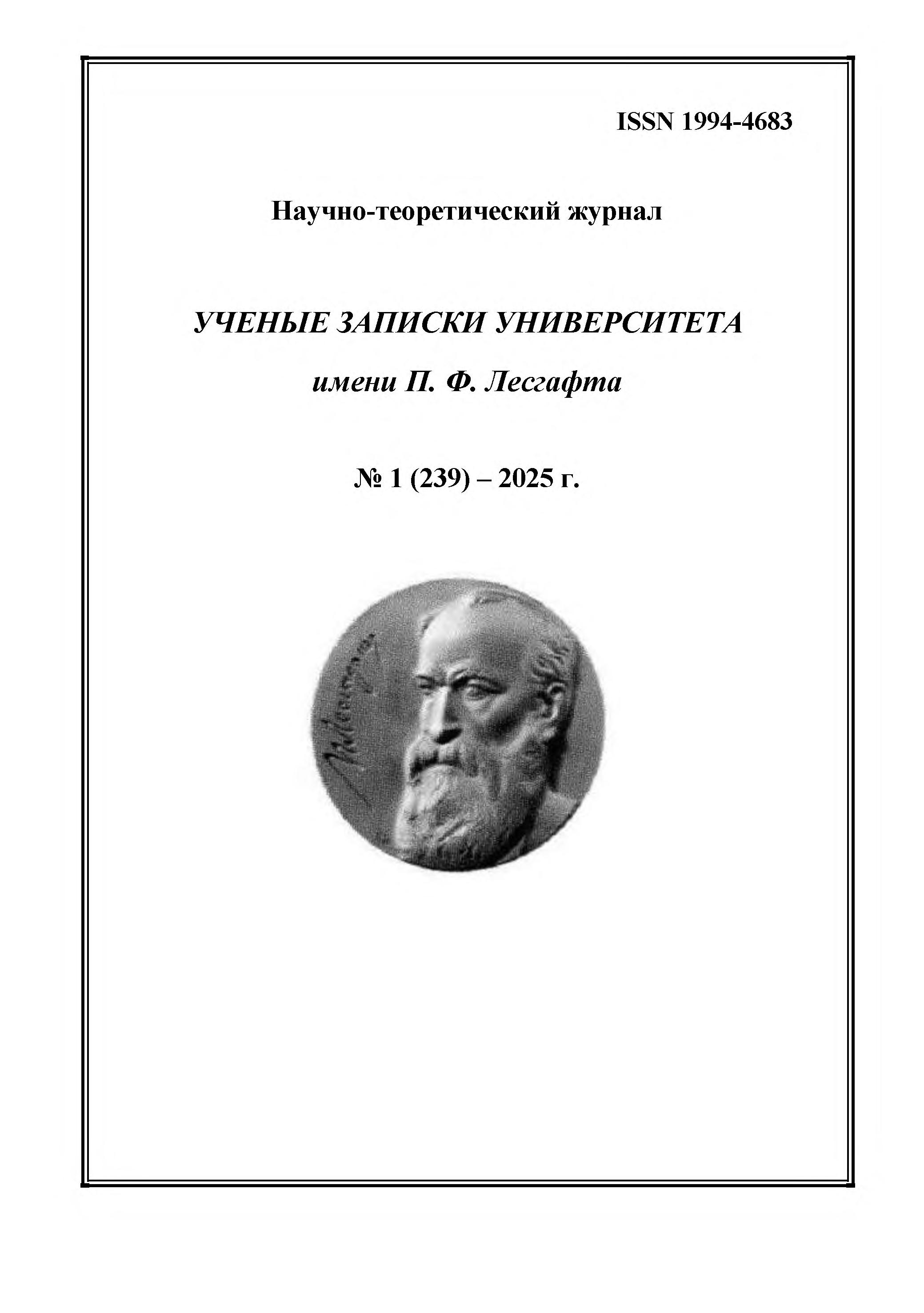employee from 01.01.2013 until now
St. Petersburg, St. Petersburg, Russian Federation
graduate student from 01.01.2021 until now
St. Petersburg, Russian Federation
CSCSTI 77.29
The purpose of the study is to analyze competitive activity and to determine promising directions for subject training, based on the synchronization of the tempo-rhythmic structure of movements with the objects and musical accompaniment of competitive compositions. Research methods and organization. To achieve the objectives of the study, a combination of methods was employed: analysis of specialized literature and program documents, pedagogical observation, linear regression analysis, modeling, and mathematical statistics methods. To study the intensification of the performance of the subject in the competitive activity, a pedagogical observation was conducted based on the analysis of video recordings from the Olympic Games from 2008 to 2024, with a total of 60 exercises analyzed. Based on the analysis of the technical performance of the subject through linear regression analysis, the model parameters of the intensity of the subject's performance in competitive programs for the year 2025 were determined. Research results and conclusions. An analysis of the competitive activities of leading rhythmic gymnasts in the world during the period of 2008–2024 has been conducted, and the dynamics of the development of tempo and rhythm of apparatus work in competitive rhythmic gymnastics compositions have been studied. Based on the identified formula through regression analysis, model indicators for apparatus exercises in 2025 were determined: for clubs, the intensity of performance should be approximately 156; for ribbon – 133; for ball – 117; for hoop – 117. One of the promising areas of apparatus training in rhythmic gymnastics is the synchronization of the tempo-rhythmic structure of the apparatus movements and the musical accompaniment of the compositions in rhythmic gymnastics.
rhythmic gymnastics, competitive activities, subject training
1. Kovalenko Ya. O. (2019), “Spatial and temporal structural elements of competitive compositions in rhythmic gymnastics at the stage of specialized basic training”, The world of sports, No 2 (75), pp. 12–19.
2. Medvedeva E. N., Golub Ya. V., Sirotina E. S., Soboleva E. A., Ageev E. V. (2024), “Objectification of the assessment of the perception of musical rhythm by female athletes of group rhythmic gymnastics exercises”, Scientific notes of the P.F. Lesgaft University, No 7 (233), pp. 126–129.
3. Suprun A. A., Titova A. V., Borisova V. V. (2020), “Tempo-rhythmic abilities of gymnasts as a factor of synchronicity of performance of motor actions by athletes in group gymnastic exercises”, Human. Sport. Medicine, Vol. 20, No. 3, pp. 88–96.
4. Shevchuk N. A., Antsyperov V. V., Shakhova M. A. (2015), “Features of the tempo-rhythmic structure of the basic exercises of rhythmic gymnastics”, Modern problems of science and education, No. 1-1, p. 942.
5. Medvedeva E. N., Davydova A. Y., Zarodnyuk G. V. (2020), “Synchronization of movements in group exercises in rhythmic gymnastics”, Theory and practice of physical culture, No. 12, pp. 85–87.
6. Goncharov V. I., Vlasenko T. N., Manshin B. G. (2023), “On the concepts of «rhythm», «tempo», «frequency of movements», «sense of rhythm»”, Scientific notes of the P.F. Lesgaft University, No 1 (215), pp. 122–126.








